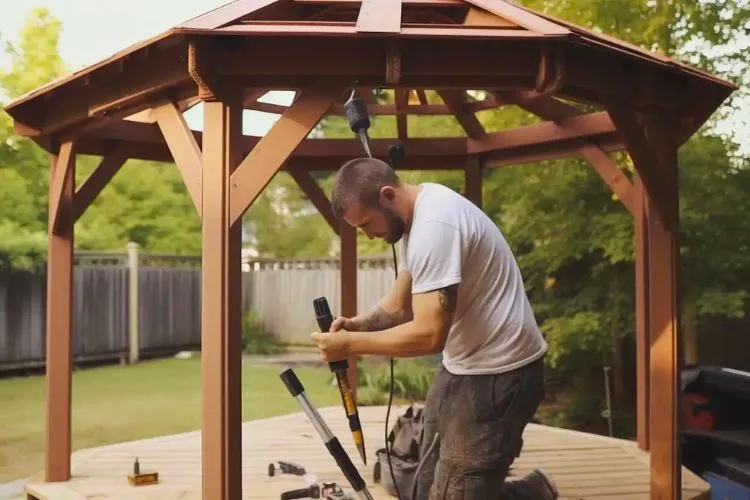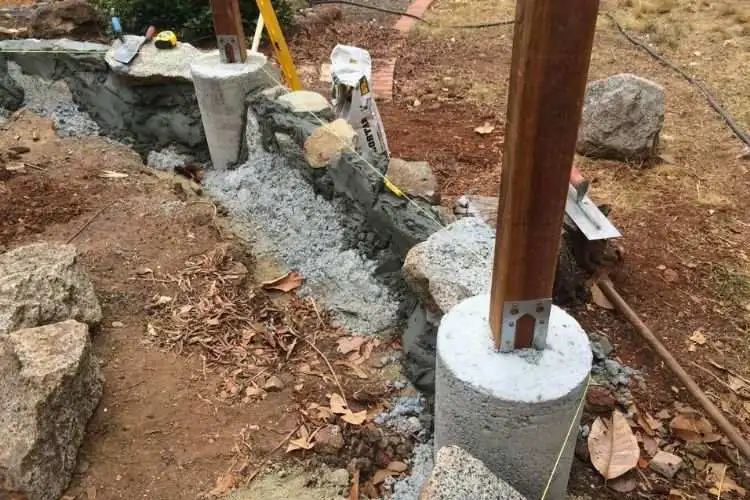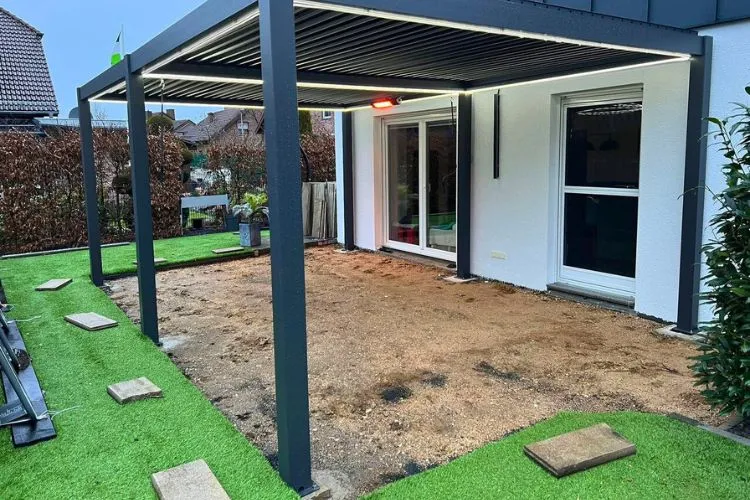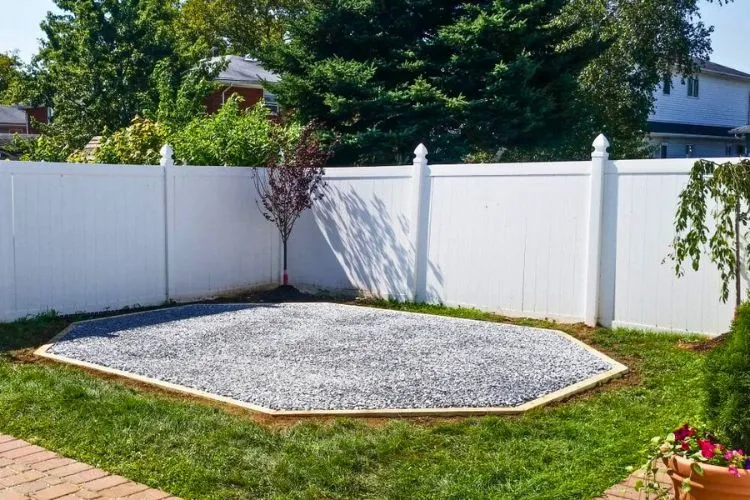A gazebo serves as an elegant addition to any outdoor space, offering a sheltered area to enjoy nature, entertain guests, and relax.
However, the longevity and safety of a gazebo significantly depend on the foundational support it rests upon, namely its footings.
Understanding how deep should footings be for a gazebo is crucial in ensuring its durability and stability over the years.

Contents
- 1 Understanding Gazebo Footings
- 2 How Deep Should Footings Be For A Gazebo?
- 3 Determining the Depth of Footings
- 4 Guidelines and Building Codes
- 5 Installation Process Overview
- 6 Maintenance Tips for Gazebo Footings
- 7 Pro Tips
- 8 Frequently Asked Questions (FAQs)
- 8.1 Can I use deck blocks for my gazebo footings?
- 8.2 How do I adjust footings for a sloped site?
- 8.3 What are the signs that my gazebo footings may need attention or repairs?
- 8.4 How long do I need to wait after pouring concrete footings before building the gazebo?
- 8.5 Are there any environmentally friendly alternatives to traditional concrete footings?
Understanding Gazebo Footings
What Are Footings?
Footings are an integral part of a gazebo’s structure, acting as the base that distributes the weight of the gazebo evenly to prevent sinking or shifting.
They are designed to anchor the gazebo to the ground, providing the necessary support regardless of the weather conditions or the load it bears.

Types of Footings Suitable for Gazebos
There are primarily two types of footings used for gazebos: concrete footings and pier footings.
Concrete footings are prevalent due to their strength and versatility, while pier footings, often made from pre-cast concrete, offer a quicker installation process.
The choice between these types largely depends on the gazebo’s size, weight, and the soil conditions of the installation site.
How Deep Should Footings Be For A Gazebo?
As a rule of thumb, footings should extend at least below the frost line while also considering soil type and load distribution needs.
However, consulting local building codes will provide specific minimum depth requirements, offering a starting point that can be adjusted based on site-specific conditions.
Determining the Depth of Footings
The depth of footings is influenced by various factors, including climate, soil type, and the gazebo’s dimensions.
Climate Considerations
The Freeze Line
In regions experiencing severe winters, the footing depth must extend below the freeze line to prevent frost heave, which can cause significant damage to the structure.
The freeze line depth varies depending on geographical location, requiring localized knowledge for accurate measurements.

Weather Conditions
Beyond freezing, other weather conditions like heavy rains can affect the footing’s depth.
Well-draining soils might require less depth compared to those in areas prone to waterlogging, emphasizing the need for understanding local climate nuances.
Soil Type and Its Impact
Different soil types—clay, sand, loam—have unique properties affecting the depth and type of footings required.
Clay soils, for example, expand and contract depending on moisture levels, necessitating deeper footings to mitigate structural movement.
Performing a soil test before determining the footing depth is advisable for optimal placement.
Gazebo Size and Weight
The physical dimensions and total weight of the gazebo dictate the footing size and spacing, influencing overall depth requirements.
Larger, heavier structures demand more substantial footing support to distribute the load evenly and prevent sinking.
Guidelines and Building Codes
Adhering to local building codes and regulations is non-negotiable when installing gazebo footings. These guidelines ensure the structure’s safety and longevity, with most regions specifying minimum depth requirements.
Acquiring necessary permits is a preliminary step that can save considerable time and resources down the line.
Installation Process Overview
Accurate measurement and leveling are paramount during footing installation.
The process typically involves marking out the footing locations, excavating to the determined depth, setting up formwork (for concrete footings), and pouring the concrete. Curing times vary, impacting the project timeline.
Maintenance Tips for Gazebo Footings
To ensure the long-term durability and safety of a gazebo, regular maintenance of its footings is essential. Below are key points for maintaining your gazebo footings:

- Regular Inspections: Schedule bi-annual inspections to check for any visible damage. Early detection of minor issues will prevent major repairs later.
- Check for Cracks: Look for any cracks in the concrete footings. Small cracks can be sealed with appropriate caulk or sealant, but larger cracks might need more professional repairs.
- Monitor for Sinking: Notice if any part of the gazebo is sinking or appears uneven. This could be a sign of footing failure.
- Prevent Water Damage: Ensure proper drainage around the gazebo. Water pooling can weaken footings over time.
- Clean Debris: Remove any debris, such as leaves and twigs, that might accumulate around the footings. This prevents moisture retention and decay.
- Apply Protective Sealant: Use a waterproof sealant to protect the footings from moisture and weather effects.
- Check for Erosion: Regularly inspect the soil around the footings for signs of erosion, which can reduce the stability of the gazebo.
- Seek Professional Advice: If unsure about the condition of the footings or how to address certain issues, consult a professional.
Adhering to these maintenance tips will help extend the life of your gazebo and ensure it remains a safe and enjoyable space.
Pro Tips
Seeking advice from a construction professional can offer insights tailored to the unique aspects of the planned gazebo site, including anticipating future landscape changes or potential interference with utility lines.
Frequently Asked Questions (FAQs)
Can I use deck blocks for my gazebo footings?
Deck blocks may be suitable for lightweight, smaller gazebos, but local building codes and soil conditions should guide their use.
How do I adjust footings for a sloped site?
Special considerations, including stepped or tiered footings, may be necessary for sloped sites to ensure level placement of the gazebo.
What are the signs that my gazebo footings may need attention or repairs?
Signs include visible cracks, uneven or sinking floors, and gaps between the gazebo base and the ground.
How long do I need to wait after pouring concrete footings before building the gazebo?
A typical wait time is 24-48 hours for initial curing, but full strength might take up to 28 days, depending on the concrete mix.
Are there any environmentally friendly alternatives to traditional concrete footings?
Yes, eco-friendly alternatives like recycled plastic footings or helical screw piles are gaining popularity for their lower environmental impact.
Conclusion:
The depth of gazebos’ footings is a critical component that affects their safety and durability.
By considering climate, soil type, gazebo size, and local regulations, you can ensure a stable and long-lasting structure.
Consulting professionals and adhering to local codes cannot be overstated in their importance.

Sergio Gomes, a passionate advocate for outdoor living and the male voice behind Shades Authority. With years of experience, Sergio is your trusted source for expert insights on gazebos, pavilions, cabanas, pergolas, and all things outdoor shade solutions. Join him on a journey to transform your outdoor spaces into stunning, functional retreats
